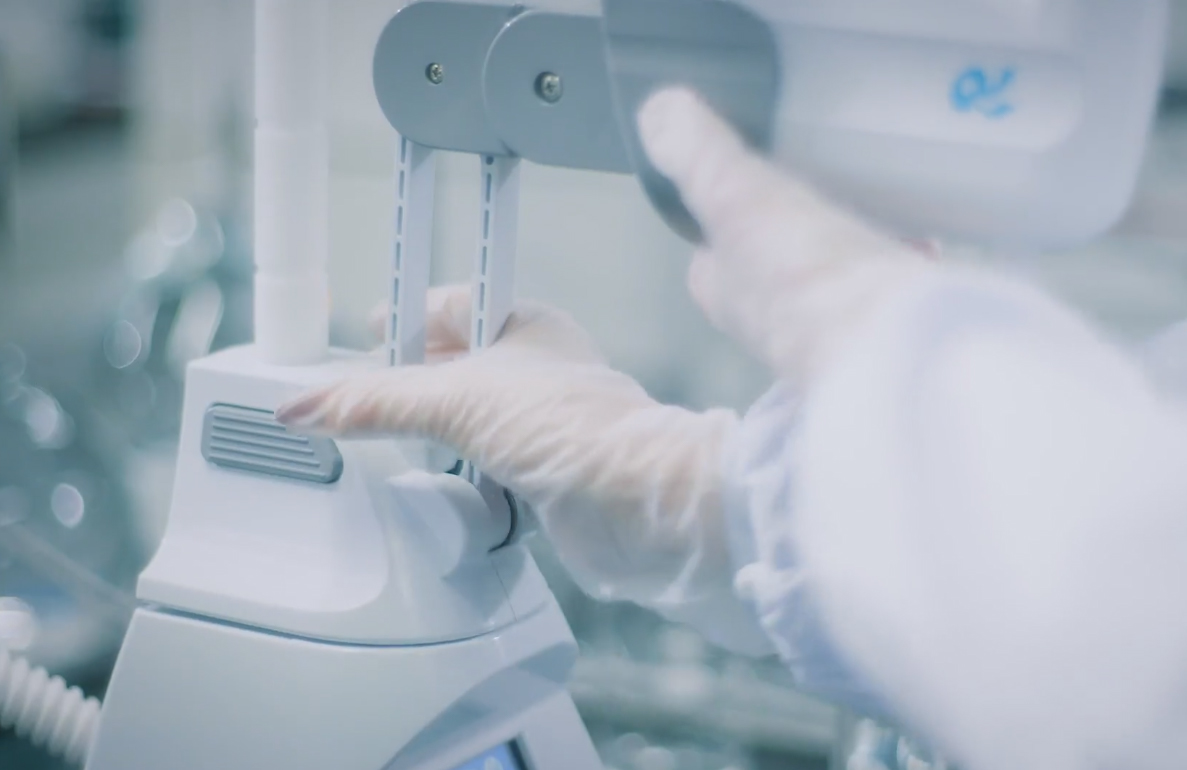A must-see for beginners: Techniques that do not contaminate pure water or ultrapure water!
Pure water and ultrapure water are very susceptible to contamination,
requiring great care to obtain accurate results.
The following introduces points to note when handling pure water and ultrapure water.
Check the water dispensing environment
Before dispensing, confirm that there are no substances in the room that could affect measurements or testing.
Ultrapure water is water from which as many impurities as possible have been removed.
It is therefore susceptible to contamination, and may be contaminated by atmospheric carbon dioxide in the air and by substances used in the laboratory.
Contamination is significant in laboratories that handle volatile organic substances.
Boron can become dissolved in ultrapure water due to HEPA filters, a matter that is often overlooked in clean rooms.
Take particular care when performing microanalysis.
Check the dispenser of the equipment

The water dispensing port is exposed to outside air, which makes it the part of an ultrapure water equipment most susceptible to contamination.
Placing a cover over the water dispensing port of the dispenser is recommended to prevent accidental contact with the water dispensing nozzle during operation.
Mold or dust on the water dispensing component can also result in contamination.
Final filters for the water dispensing port are used as needed for anti-microbial measures and analytical applications.
There are cases, however, in which the filters can contaminate ultrapure water.
This is because the filters are exposed to the outside environment and thus to the risk of contamination.
Contamination from the final filter on the water dispensing port cannot be detected by the equipment’s water quality sensor, and thus nearly always goes unnoticed.
If possible, choose an equipment that has all filters contained internally.
Discard the first few liters discharged from the equipment
Avoid using the initial ultrapure water discharged from the system. Ultrapure water is circulated to increase its purity; depending on the equipment, ultrapure water may pool in tubes or tanks.
Even if the equipment indicates that water quality is normal, initially drain water for 10 to 20 seconds.
Circulation type differs by ultrapure water equipment. Choose a circulating equipment that includes a pure water tank.
Dispense water carefully without creating bubbles
When dispensing ultrapure water, do so using the side of the container, as if pouring beer.
If water is allowed to splash down from an elevated position, the ultrapure water will mix with air and become contaminated.
Particular care is required in laboratories that handle volatile substances.
When taking the trouble to use ultrapure water, be sure to use proper water dispensing techniques.
Use immediately after dispensing
The purity of ultrapure water stored in a container or plastic tank will gradually deteriorate.
Use the water as soon as it is collected.
In organic analysis requiring water with particularly low total organic carbon (TOC), ghost peaks may appear in testing results when pooled water is used.
Great care is required in laboratories that handle volatile substances.
The consume-by date for pure water and ultrapure water is fleeting.
When taking the trouble to use ultrapure water, be sure to use proper water dispensing techniques.
Summary
We hope that the rudimentary techniques introduced here, which can be put into use right away, will prove helpful.
- Water dispensing environment
- Dispenser of the equipment
- Discard the first few liters discharged from the equipment
- Dispense water carefully without creating bubbles
- Use immediately after dispensing
Ultrapure water is often viewed as a mere utility, but it can have a significant impact on accuracy and reproducibility in testing.
Dispense ultrapure water properly while paying heed to the points above.


